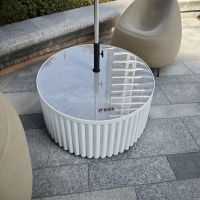Welcome to the website for landscape facilities products and knowledge.
What are the key differences between hand-rubbed and machine-buffed finishes?
When it comes to wood finishing, the techniques used can significantly impact the final look and durability of the surface. Two popular methods, hand-rubbed and machine-buffed finishes, offer distinct results. Here’s a breakdown of their key differences:
1. Texture and Appearance:
- *Hand-Rubbed Finish*: This method involves applying finishes like oil or wax by hand, often with a cloth or brush. The result is a matte or satin sheen with a subtle, organic texture that highlights the wood’s natural grain.
- *Machine-Buffed Finish*: Using power tools, this technique creates a high-gloss, mirror-like surface. The process is faster and produces a more uniform appearance, but may lack the depth of hand-applied finishes.
2. Durability and Maintenance:
- Hand-rubbed finishes are typically less durable but easier to repair, as small scratches can be blended in with minimal effort.
- Machine-buffed finishes are more resistant to wear but can show scratches more prominently, requiring professional refinishing in some cases.
3. Craftsmanship and Time:
- Hand-rubbing is labor-intensive and time-consuming, often favored for custom or high-end furniture where artistry is prioritized.
- Machine buffing is efficient and ideal for mass production, offering consistency and speed.
4. Aesthetic Appeal:
- Hand-rubbed finishes appeal to those who appreciate rustic or traditional styles, as they enhance the wood’s natural character.
- Machine-buffed finishes suit modern or contemporary designs, delivering a sleek, polished look.
Choosing between these finishes depends on your project’s goals, budget, and desired aesthetic. Hand-rubbed finishes offer warmth and authenticity, while machine-buffed finishes provide precision and efficiency.
Related search:

Recommendation
Round metal tube border design table with tempered glass or granite countertop on the top.